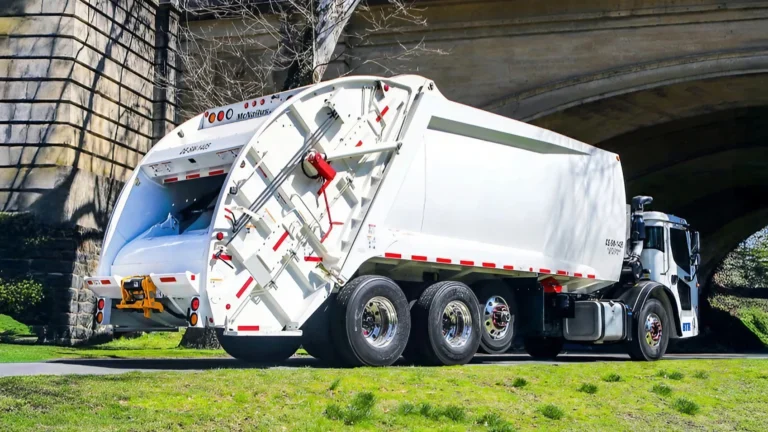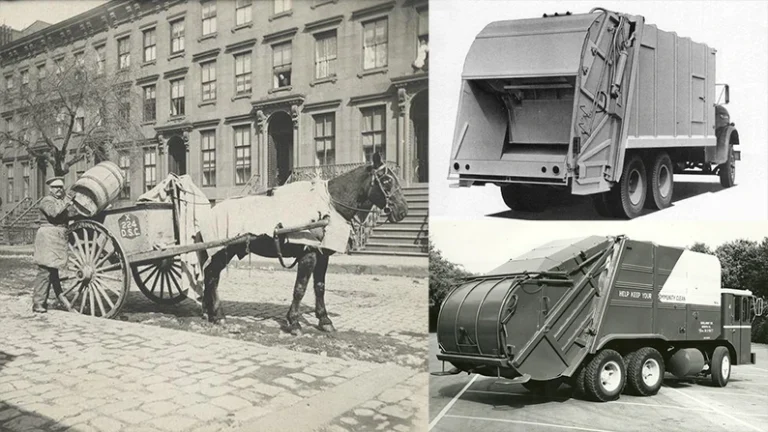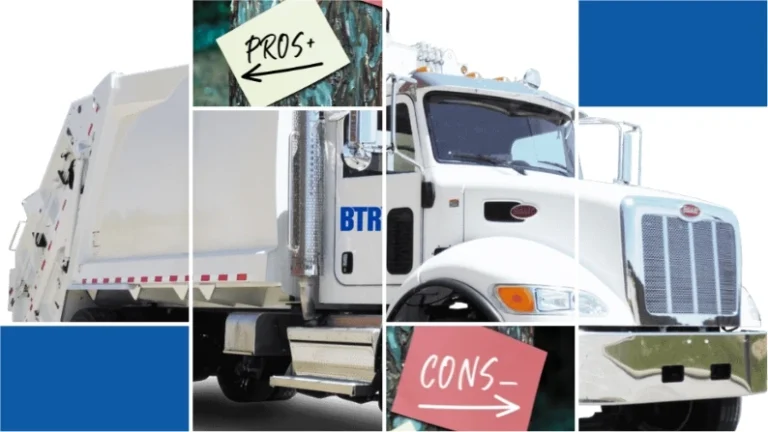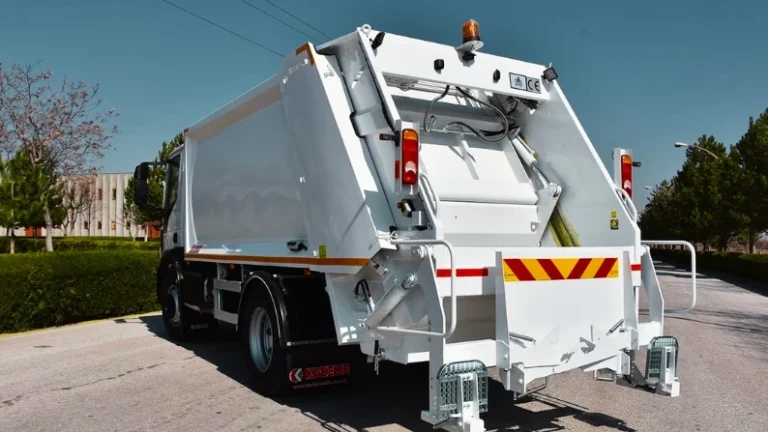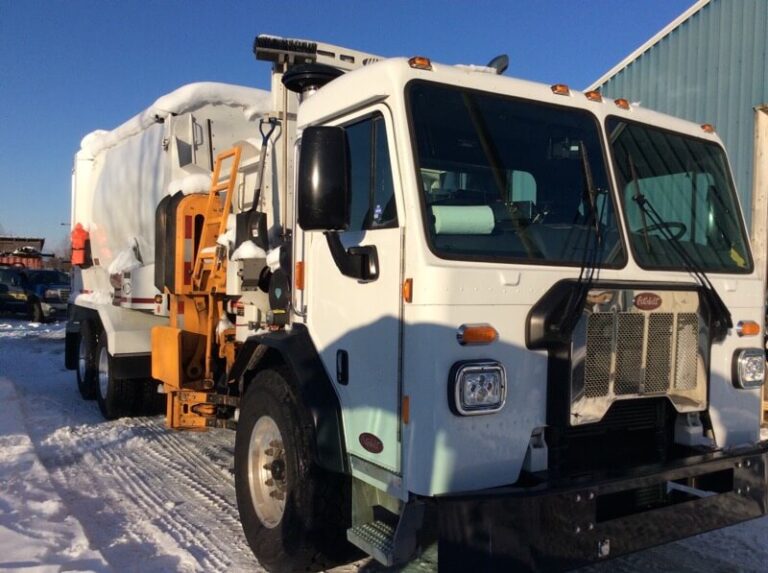Garbage trucks may seem like ordinary machines, but they have a surprising history that shows just how far waste collection has come. Among the most recognizable is the rear loader, a workhorse that has been helping residential and commercial establishments stay clean for decades. From simple, hand-operated designs to the heavy-duty machines we see today, the rear loader has evolved significantly in terms of efficiency.
At Big Truck Rental, we appreciate the story behind every truck on the road. In this blog, we’ll explore the history of the rear loader, its development over the years, and why it remains a trusted choice for waste management worldwide.
Early Waste Collection Before Rear Loaders
Before rear loaders, collecting trash was tough work. Cities often relied on horse-drawn wagons or open-bed trucks, where workers would toss garbage by hand. This made the job dirty, unsafe, and inefficient. Trash piled up quickly, and crews struggled to keep pace with growing city populations. There was a clear need for a better solution, something that could carry more waste, reduce manual lifting, and help keep streets cleaner.
Invention of the Rear Loader
The rear loader was developed in the late 1920s and early 1930s. It solved many of the problems that early waste collection faced. By adding a hopper at the back of the truck, sanitation workers could toss in bags and bins with less strain. The real breakthrough was the development of the compaction system. With hydraulics pressing down the garbage inside the truck, crews could haul more waste before needing to unload. This meant fewer trips to the landfill and more efficient city service. The rear loader quickly became a standard across urban areas.
Evolution Over the Decades
Rear loader garbage trucks have evolved significantly since their early beginnings to meet the needs of growing cities and changing waste collection demands.
- Early motorized trucks (1900s–1920s): The first motorized garbage trucks were basically flatbeds. Workers manually loaded trash into open cargo beds. To help with odor and litter, covered and sealed beds were later introduced.
- Hopper and compactor introduction (late 1920s–1930s): Trucks began to include hoppers to facilitate easier loading. A major innovation occurred in 1938 with the introduction of the Garwood Load Packer, which featured an onboard hydraulic compactor, enabling trucks to carry more waste per trip.
- Hydraulic rear loading (1940s onwards): The Leach Packmaster, developed in 1947, introduced a hydraulic rear-loading system. A hydraulic cylinder moved waste into the truck’s body, reducing manual labor and increasing efficiency.
- Modern rear loader design (1950s–present): By the 1950s, rear loaders with a rear hopper had become standard. They allow both manual loading and mechanically lifted bins. Modern trucks feature stronger hydraulics, cleaner engines, quieter operation, and ergonomic controls, keeping them effective for residential and bulk waste collection.
These developments helped rear loaders remain a practical choice, even as side loaders and front loaders were introduced to the waste collection industry.
The Role of Rear Loaders Today

Despite newer waste collection technologies, rear loaders remain essential. They are especially useful in residential neighborhoods, commercial areas, and downtown streets. They are also a go-to option for bulk waste collection, such as furniture or oversized waste.
At Big Truck Rental, you can rent rear loaders for short-term or seasonal projects, or buy off-rent trucks for longer-term needs. This flexibility allows companies to manage routes or special projects without investing in a new whole fleet.
Final Thoughts
The history of the rear loader garbage truck reveals how it became the backbone of waste collection. From early flatbeds to today’s efficient and versatile trucks, rear loaders have adapted over the decades. With options to rent or buy off-rent trucks from Big Truck Rental, businesses can maintain smooth, flexible, and cost-effective collection operations.
Upgrade Your Fleet with a Rear Loader from Big Truck Rental
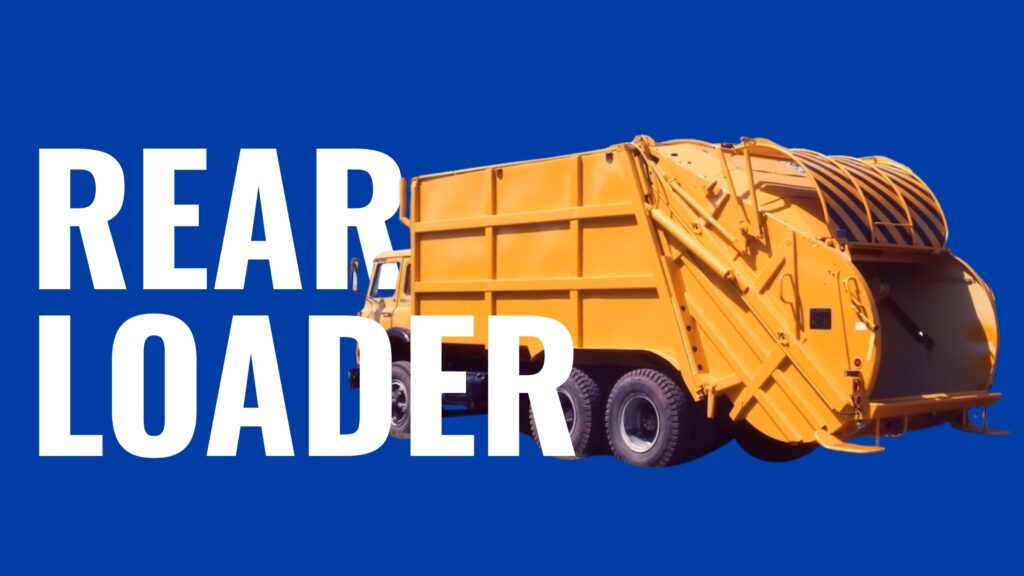
Rear loaders have a long history of making waste collection safer and more efficient, and they continue to be a backbone for residential and commercial routes. At Big Truck Rental, we offer reliable rear loader trucks you can rent or buy to get the job done. Request a quote today!
FAQs
Why would municipalities use rear loaders for residential waste collection?
Rear loaders are especially effective for residential routes because of their versatility and maneuverability. They can easily navigate narrow streets, alleys, and cul-de-sacs where larger trucks may struggle. Rear loaders also allow crews to handle bagged trash, bulky items, and mixed waste in one pass, making them ideal for the varied waste streams typical in neighborhoods. For municipalities, this means efficient service, fewer missed pickups, and the flexibility to adapt routes to different community layouts.
What are the benefits of buying an off-rent rear loader from Big Truck Rental?
When municipalities or private haulers purchase an off-rent rear loader from BTR, they get a like-new truck with low hours that’s route-ready on day one. These trucks have been carefully maintained in BTR’s rental fleet and come with the advantage of capital savings compared to buying new. It’s a smart way to add dependable, modern equipment to your fleet without the long lead times or higher upfront investment of brand-new trucks.
Why are rear loaders still used today?
Rear loaders remain popular because of their versatility. They can handle bagged trash, bulky items, and mixed waste, making them ideal for both residential neighborhoods and commercial routes.

